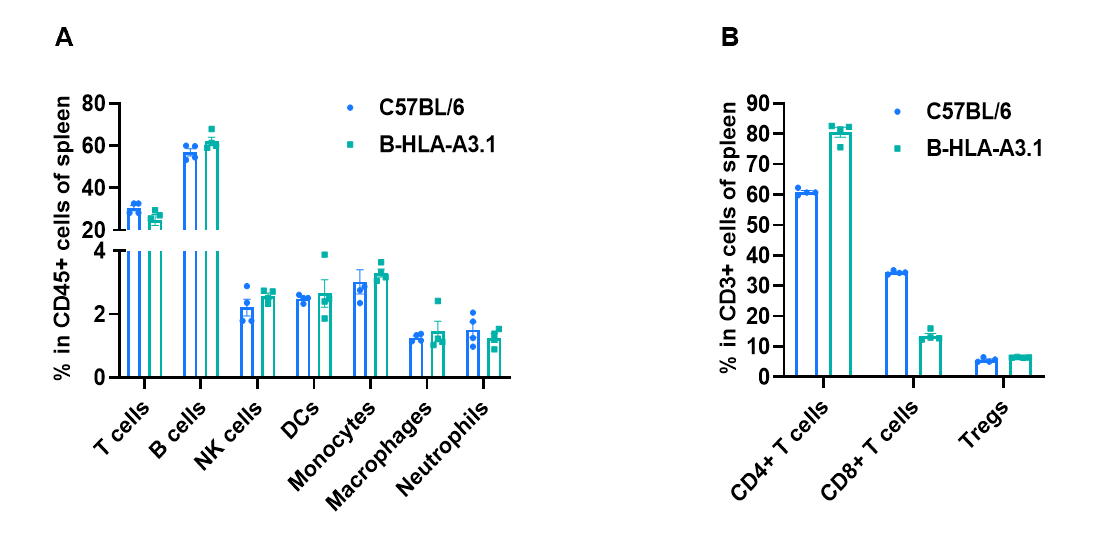Basic Information
-
Targeting strategy

-
Gene targeting strategy for B-HLA-A3.1 mice.
The B2M gene (Exon1 to Exon3) of mouse were replaced by the sequence encompassing the human B2M CDS and HLA-A*0301 gene that included leader sequence, α1 and α2 domains ligated to a fragment of the murine H-2Db gene containing the α3, transmembrane and cytoplasmic domains.
-
Protein expression analysis in spleen and blood

-

Strain specific B2M and HLA-A3 expression analysis in wild type C57BL/6 mice and homozygous humanized B-HLA-A3.1 mice by flow cytometry. Splenocytes(A) and blood(B) were collected from wild type C57BL/6 mice (+/+) and homozygous B-HLA-A3.1 mice (H/H), respectively, and analyzed by flow cytometry with species-specific anti-HLA-A3 and anti-B2M antibody. HLA-A3 and human B2M were exclusively detectable in homozygous B-HLA-A3.1 mice.
-
Frequency of leukocyte subpopulations in spleen of humanized B-HLA-A3.1 mice

-

Frequency of leukocyte subpopulations in spleen by flow cytometry. Splenocytes were isolated from wild type C57BL/6 mice and homozygous B-HLA-A3.1 mice (n=4, 2 female and 2 male, 7-week-old). A. Flow cytometry analysis of the splenocytes was performed to assess the frequency of leukocyte subpopulations. B. Frequency of T cell subpopulations. Percentages of T cells, B cells, NK cells, dendritic cells, granulocytes, monocytes, macrophages and Tregs in B-HLA-A3.1 mice were similar to those in C57BL/6 mice. Percent of CD8+ T cells were significantly decreased while percent of CD4+ T cells were significantly increased, demonstrating that introduction of hB2M-HLA-A3.1-H-2D in place of mouse B2M may affected the development of CD8 + T cells, which in turn affected the proportion of T cell subtypes in the spleen. Values are expressed as mean ± SEM.


